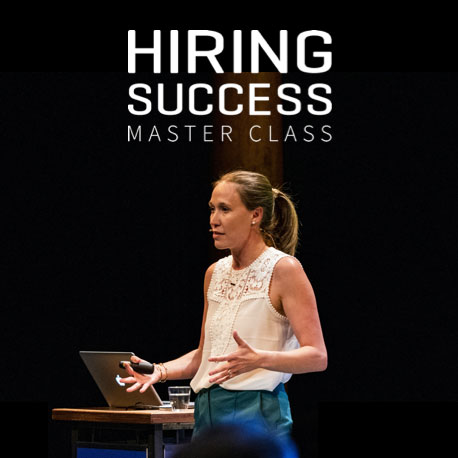Today, Bill Boorman, recruiting vet and advisor to the employee referral platform, Real Links, shares his advice on building a referral program that actually works. Don’t let him hear you say the word ‘recommendation’—find out why!
Article Highlights
- The problem with referrals
- How to Fix Referrals
- Cash Rewards Are Not a Cure-All
- Tips for Starting a Referral Program
Whilst referrals are much acclaimed as a great source of talent attraction and engagement, in fact, 82% of employers rated employee referrals as having the best return on investment, research shows that organizations rarely achieve more than 7% of total hires through referrals. This has always been an area of concern for me, having spent over 10 years working in the referral space, helping tech companies build referral platforms, and organizations to introduce methodologies that will increase the volume of hires.
In discussing the outline for this resource, I took a look at the experiences of 100 companies from SME to global enterprise in order to understand their experiences and opinions of operating referrals as a hiring channel. Whilst most organizations could only attribute a low percentage of hires (averaging 5%, others were achieving as high as 70%), I wanted to understand if our referral framework still worked, and what made some organizations excel, whilst most struggled to achieve their objectives.
The problem with referrals
The most common reservation to hiring through a referral that came up was a fear that this channel could potentially damage efforts towards achieving diversity hiring targets. The assumption being that folks tended to refer ‘in their own image.’
This is a common headache when referrals are positioned in the organization as recommendations. That is usually tied up with well-meaning “referral programs”, where employees are asked to recommend friends or people they know, and qualifying rules are applied for who qualifies. This quite often leads to failure because employees with no previous experience in recruiting are asked to make evaluations regarding ‘fit’ as a recruiter would. Unsurprisingly, these colleagues fall short. It’s not their fault, I know I would make some colossal mistakes if I was asked to create code and build a product (an area I have only a basic technical capability).
The volume of people the layperson is confident to recommend is low and runs out quickly, and the folks referred tend to be similar in demographic to whoever is doing the referring. So, the net result of this type of referral strategy is low volumes of referred candidates, limited diversity, and a scheme that dies on its feet a few months after launching.

How to Fix Referrals
From my research, I found that what organizations are actually looking for is a means of developing the supply chain of applicants who came from different groups than those they usually hired.
So, how do we solve this age-old problem? This dark cloud over referral programs causes many of you to think ‘referrals, we tried that’? It didn’t really work out for us. Won’t do that again.’ It doesn’t have to be that way. The solution to this challenge is to stop looking for recommendations, and asking colleagues to be recruiters, and start asking for referrals.
What is a referral? In my world ‘referral’ is an introduction, that requires no more than asking employees to share jobs or content with people they are connected with on a one-to-one basis, through email or social media messaging. You will need to make this easy to do, with limited friction or effort, with a mechanism for tracking results.
You might note that I mentioned referring not just to jobs, but also content, or more specifically, employer brand content. I should add that I’m not talking about generic employer brand type content: The day in the life of video, or the ‘look how fun we are’ stuff.
The most effective content (the stuff people actually read and click on) is learning content or peer advice. If you want to know where to start with this, talk with your L&D colleagues. They probably have lots of it that will showcase your hiring managers or their potential colleagues. Your employees are more likely to share this (because it has value and is not considered a marketing blurb), and the recipient is more likely to open and engage. This can become a referral when you include a simple call to action to look at jobs in the team or ‘come and do this every day.’
With my diversity hat on, I will also consider images and content that are proven (by tracking), to appeal to specific groups. Content, over jobs sent in this way, achieve 5 times the open-rate and when targeted at a specific audience by skill/job type, 3.2 times the apply-rate.
Cash Rewards Are Not a Cure-All
You are probably realising that this takes some effort and planning to pull off. Most of the referral schemes that we saw which were failing, or had failed, did so because the folks in charge had decided that a cash reward for hires was enough. ‘Just tell new starters about it during onboarding and hope they remember to look up jobs as they arise and share them with buddies!’ Was the only real strategy behind it. These schemes are destined to fail (maybe a few weeks after your spectacular launch) and let me tell you why.

Firstly, cash schemes for hires come with lots of rules. The more admin needed, like uploading resumes, filling forms, or qualifying people, the less likely folks are to refer. We also hear plenty of stories where employees feel cheated because they were exempted because they didn’t fill out the paperwork, the candidate was already in the ATS, they didn’t qualify by virtue of job role (especially recruiters), or any number of similar tales of woe. Lots of rules don’t work, and a cash payment 6-9 months down the road, in the unlikely event that your referral is hired does not motivate folks to refer.
You are much better spending the referral-hire pot of gold on micro rewards or competitions for the behavior you really want, sharing jobs and/or content on a one-to-one basis. The focus groups help to understand what will motivate employees to want to contribute, and more importantly, to keep contributing down the line long after launch.
Tips for Starting a Referral Program
Given the effort needed, I have found the most success is achieved when the recruiters (or technology) do most of the heavy lifting, and when referrals are not asked for with every job. Not all roles have a shortage of candidates or a lack of pipeline. The most successful companies in our research ran specific campaigns for harder to fill roles, or in areas where they were seeking a more diverse pipeline.
There are a few key points to keep in mind from my own research and experience as well as the findings of a series of focus groups from Real Links, a referral automation and gamification company.
- Define Your Target Audience
Referral programs work best when you already have a candidate target group defined. From there you can identify employees who already have the skills and experience you are looking for from your new talent. These internal people will give you the best insight and provide the best networks.
- Strategic Messaging
Once you’ve identified employees with desirable networks, put some work on the outreach—this includes communications with your internal talent. Work with your employee ambassadors to determine the frequency and content of the messages they will send to their networks.
- Set Clear Objectives
Define your expectations of the employee ambassadors and be clear on the role requirements which could include location, skills, or availability. On the other side, let them know what they can expect from you. For example, I find it effective to guarantee a review and notification to both the referrer and the applicant within 48 hours of receipt.
At the end of the day, referrals are well worth the strategic investment. These candidates engage with your company having already been sold on the employer brand. And as they are already part of the employee network, you can expect a higher net hiring score down the line when the recruiter, hiring manager, and the talent themselves ultimately assess the fit. I hope this has given you some ideas about how you can achieve much more through referrals, without the worry negatively impacting on diversity.
For a deeper dive into how to deliver hiring success through referrals, you can read Bill’s Employee Referral Playbook here.

 Enroll in the Master Class & earn 6 SHRM credits
Enroll in the Master Class & earn 6 SHRM credits